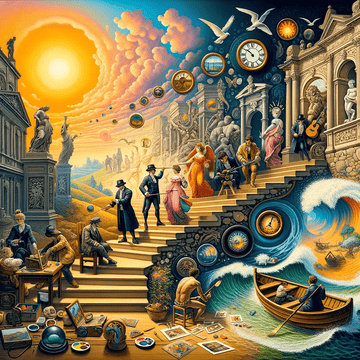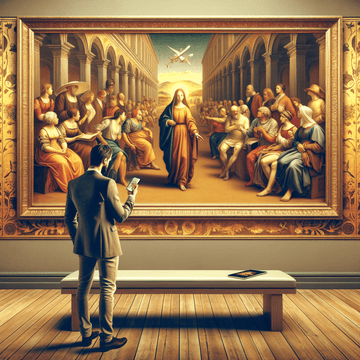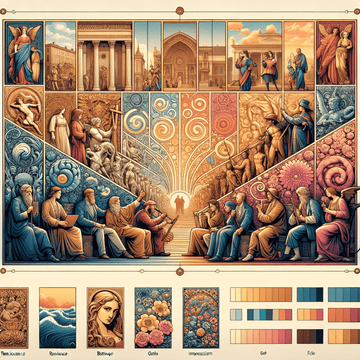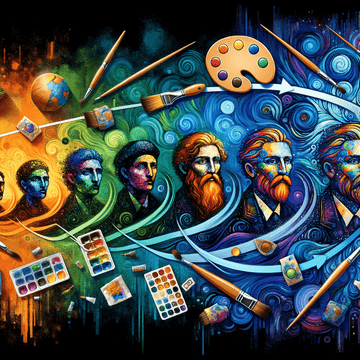The Evolution of Western Art Styles: From Baroque to Impressionism - A Journey Through Time
Jul 06, 2024

The Evolution of Western Art Styles: From Baroque to Impressionism
The Baroque Period (1600 - 1750)
Baroque art originated in the late 16th century and is identified by its grandiose, dramatic and emotional themes. The art style manifested as a reaction against the intricate and formulaic Mannerist style that dominated the Late Renaissance. Artists like Caravaggio and Peter Paul Rubens superseded the boundaries of the existing traditional art styles, bringing an element of realism and intensity to their work. Lavish ornateness and intricate details often characterize Baroque pieces.
The Transition from Baroque to Rococo (1730 - 1770)
As society evolved, so did art. The flamboyant Rococo style emerged as an artistic response to the strict regulations and grandiosity of the Baroque period. Rather than depicting religious or historical themes, Rococo primarily revolved around lighter themes of love, youthful vitality, and beauty. Emphasis on pastel colors and frivolous detailing exemplifies this art style. Famous artists of the Rococo era include Jean-Honoré Fragonard and François Boucher.
The Age of Enlightenment and Neoclassicism (1760 - 1840)
The age of enlightenment and the subsequent French Revolution brought about a radical transformation in art. The Neoclassicism style, characterized by clear, sharp lines, somber color palettes, and subject matter sourced from Greek and Roman history, was a reaction against the whimsical Rococo art style. Notable Neoclassical artists, such as Jacques-Louis David, propagated virtues such as heroism, duty, and patriotism through their works.
Romanticism (1800 - 1850)
The Romantic period followed the Enlightenment, placing focus on emotion and individualism as well as glorifying the past and nature. It was a reaction to the Industrial Revolution and the social and political norms of the Age of Enlightenment. Romanticism reached beyond the rational and classical ideals, instead emphasizing the emotional, the dramatic, and the imaginative. Artists which embody the Romantic style include Gustave Courbet and J. M. W. Turner.
Impressionism (1860 - 1900)
Impressionism marked a significant shift in artistic expression. The style is famed for exploring the effects of light on the landscape, using loose brushwork to capture fleeting moments. Impressionist artists often worked outside, a stark contrast to the controlled environments of studios where previous artwork had been created. Leaders of this revolution in art include Monet, Renoir, and Degas.
Interested in exploring more art like what we've discussed today? Our collection offers a diverse range of styles, including Baroque and beyond. Feel free to dive into our world of artistic wonders by visiting https://metalposterart.com/collections/baroque. Whether you're looking to admire or to acquire, there's always something captivating waiting for you. We're excited to share our passion for art with you.







